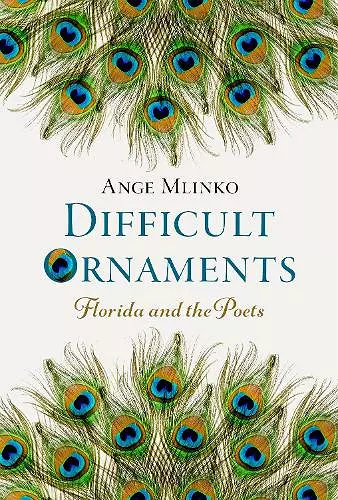Difficult Ornaments
Florida and the Poets
Format:Hardback
Publisher:Oxford University Press Inc
Published:24th Dec '24
Should be back in stock very soon

This is a book about the works that six twentieth-century American poets created in and about the state of Florida--or, in one case, refused to create. Those poets who nourished their muse on Florida's landscape, history, and myths in turn helped perpetuate those myths: they keep an idea of Florida alive in the cultural imagination and in the language. They were not regional poets, because they did not live here permanently. But they do contribute to a psychogeography: theirs is a Florida that one can access from anywhere in the world through the pages of their books. It so happens that these poets compose a chain of personal friendship and influence: Marianne Moore was friendly with Wallace Stevens, Elizabeth Bishop was friendly with Moore, James Merrill was friendly with Bishop, and socialized frequently with Harry Mathews when both had houses in Key West. Only Riding, who rose to prominence in the 1920s, gave up poetry around 1941, and moved to Wabasso in 1943 to live an isolated existence, stands apart. And yet there are correspondences to be drawn between her work and Merrill's, for instance. The word "ornament" is used by both biologists and literary critics to describe the extras of beauty; but whether it is the encumbrance of a peacock's tail or the profusion of metaphor, ornaments are also seen as "difficult." What is it about "difficult ornaments" that make poems surprising, distinctive, and enduring? And does a proximity to the tropics-nature's own laboratory-compel poets to reach for invention and experiment? Does Florida contribute to an "evolution" of poetics? That's what this book explores.
Difficult Ornaments brilliantly reveals how the lush Floridian landscape inspired six twentieth-century American poets. Subtly and discerningly, Mlinko examines the peacock character of the state and of poetry alike, in order to clarify the often-overlooked power of poetic ornament. * David Caplan, Southern Methodist University *
This attractively personal meditation on poetry and place, by one of the most subtle and discerning readers of poetry around, is actually a treatise on style--to be specific, a celebration of the extravagant, 'proliferal,' peacock style that Stevens and poets like Bishop and Merrill cultivated in the coral soil of a half-real, half-imagined Florida. In the process they created an unlikely American tradition that Ange Mlinko has defined and introduced us to here. * Langdon Hammer, Yale University *
'The state with the prettiest name,' as Bishop dubbed Florida indelibly, is also a state of mind in which profusion and extravagance flourish, and it has found a proponent, midrashic and scholarly, in Ange Mlinko's commentary, equally ludic and intense. Like her poems, these essays are trellises for vines dense with blossoms, creating their own patterns by means of lightning transition, serendipity, resurrected etymologies, and other percipient or witty trouvailles--all rooted in rich, 'venereal soil,' in Stevens's term. The vines, the lines, the motifs of her poets interlace like rhymes in a mazy troubadour form, mazy and florabundant. At times one suspects the subject is not Floridian but American poetry itself. * Stephen Yenser, Author of The Consuming Myth: The Work of James Merrill (1987), Stone Fruit (2016), and Blue Guide (2006) *
Mlinko describes Difficult Ornaments as a 'lyrical meditation on style'. Though she is clear it is neither a biography of the six poets nor a history of Florida, a reader won't be disappointed with the number of facts interwoven herein....Both McLane and Ange Mlinko seem impossibly cool to me: those whip-smart girls in school who circumvent the cliques with a quieter popularity and make no special effort to fit in, accepted instead for their talent and unmistakable excellence. * Kathryn Maris, Times Literary Supplement *
ISBN: 9780197776551
Dimensions: 218mm x 147mm x 23mm
Weight: 318g
184 pages